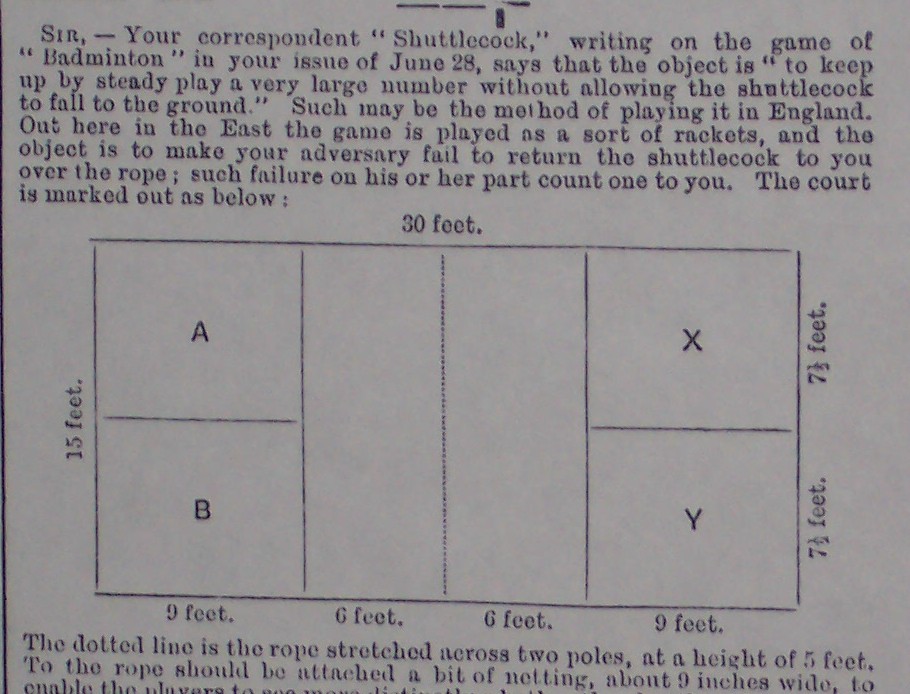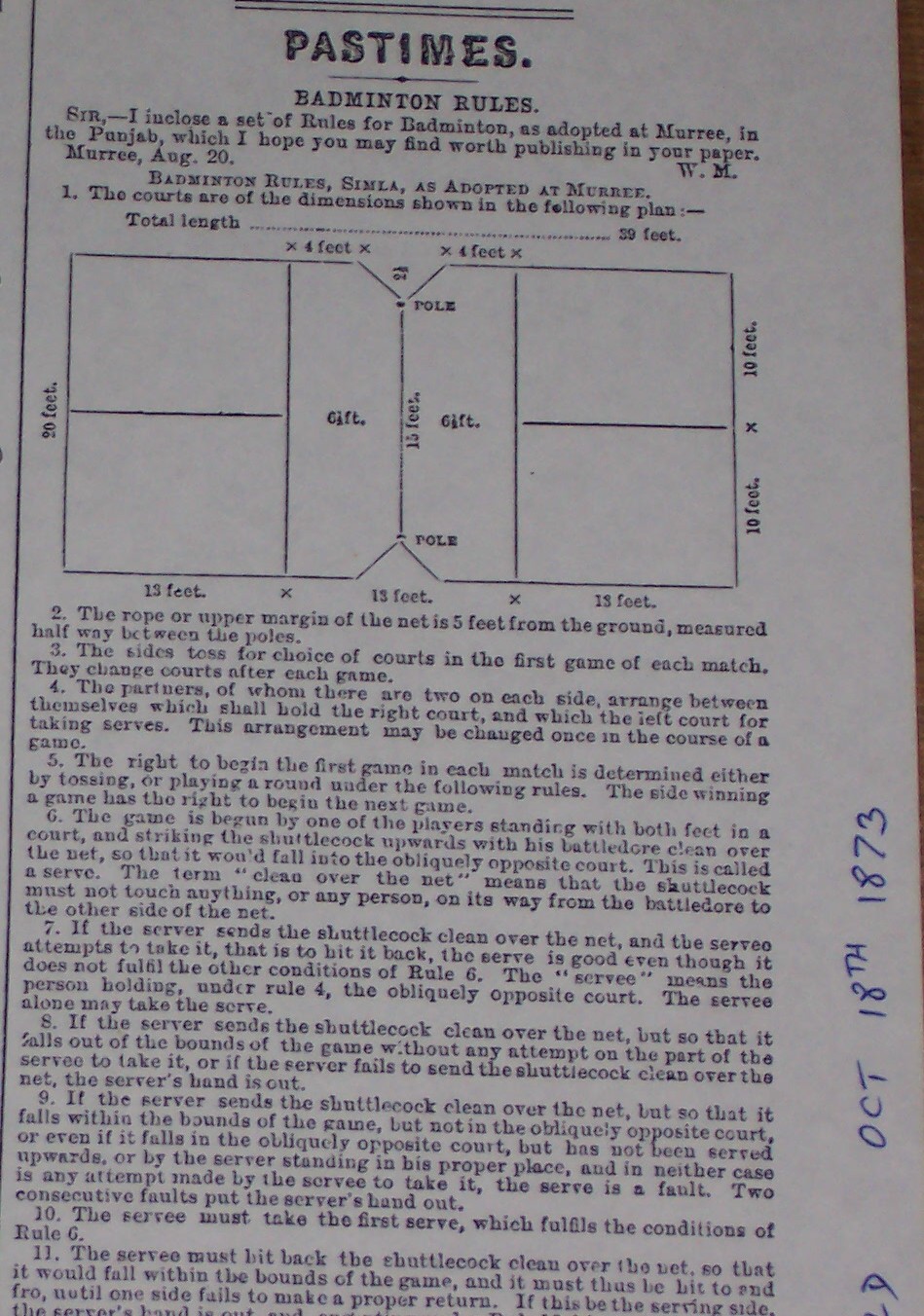
Origins of the Sport of Badminton
d: More letters from India 1873
After the previous article there followed a shorter one from a contributor called ‘LADIES RACKETS’ writing from Nagpore on The Field August 10 1873. It starts:
SIR, - Your correspondent ‘Shuttlecock’, writing on the game of Badminton in your issue of June 28, says that the object is “to keep up by steady play a very large number without allowing the shuttlecock to fall to the ground”. Such may be the method of playing it in England. Out here in the East the game is played as a sort of rackets, and the object is to make your adversary fail to return the shuttlecock to you over the rope; such failure on his or her part count one to you.
The writer has put his finger on the vital point: the new game is one where you have an adversary rather than a partner.
.A diagram of the court follows; it is a rectangle 30 feet long and 15 feet wide, and a net is strung across the whole width of the court. It is divided into four service areas with neutral ground in between. The game is described, and seems very much the same as the Calcutta version. We shall refer to these as The Nagpore Rules.

The author points out that ‘The game is sometimes played on larger courts with three or four players on each side. Our experience is that the small court, with two a side, affords the best games'.
=============================================
As promised, the next issue, The Field October 18th 1873, had the letter from Murree.
BADMINTON RULES
SIR, - I enclose a set of Rules for Badminton, as adopted at Murree, in the Punjab, which I hope you may find worth publishing in your paper. Murree, Aug. 20. W.M.
BADMINTON RULES, SIMLA, AS ADOPTED AT MURREE
1’ The courts are of the dimensions shown in the following plan: -

The court is 39 ft long and 20 ft wide. The interesting thing is that the posts are set 2 ˝ ft inside each side line, with the guy ropes fixed on the side lines. The effect of this is that there are apparently ‘nicks’ in the court at the centre of the side lines. This may the origin of the so-called 'hourglass court’, the idea of which amazes us so much today. It seems very probable that the posts are set inside the court only for the practical reason of installing the guy-ropes to support the net posts, and not through any idea that the resultant shaped court is better than a rectangular one.
There are 21 rules in this version.
The editors also add:
Mr. James Lillywhite, of 3, Queen’s Circus, Cheltenham, has sent us a printed four-page card giving a description and rules of this game. As this card can be obtained from Mr. Lillywhite, we need not say any more than that the ground plan is very similar to that given above, the dimensions being a little less, and that the code of rules is more brief. - Ed.
==========================
Summary, re the hourglass court
At this point, now we have seen three different but similar sets of rules, it seems unlikely that there was ever an 'hourglass' shaped court for Badminton, that is one with tapering side lines. It seems quite possible that the term arose simply because the posts were sometimes set inside the side lines, so that the court was pinched at the centre. These rules state that the shuttle had to pass over the net, and had to land within the external boundaries of the court. It was apparently permissible for the shuttle to be hit so that it landed outside the posts, but still inside the court.